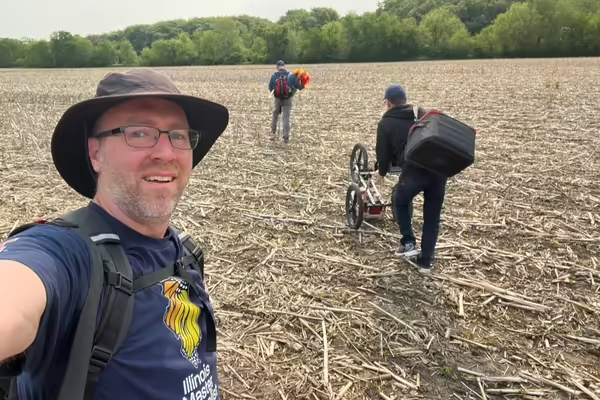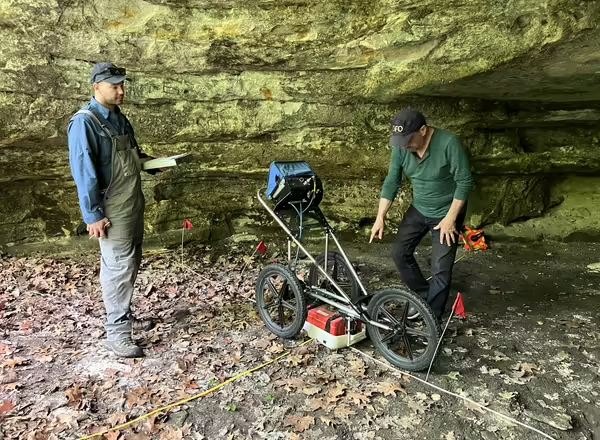
OGLESBY, Ill. – Local Master Naturalist volunteer Chris Woeltje recently had the unique opportunity to spend a day in the field with archaeologists from Wisconsin, assisting in the survey of two potential Native American sites at Belrose Farm in Wedron, Illinois. The survey aimed to uncover evidence of Indigenous history dating back over 1,000 years.
On Saturday, May 31, Woeltje joined archaeologists Dan Joyce and Pete Geraci, both from Kenosha, Wisconsin. Geraci, a researcher from the University of Wisconsin-Milwaukee, has a longstanding connection to Belrose Farm, having surveyed and documented the site’s Native American history. Joyce, with 40 years of experience in archaeology and previous work at the Field Museum in Chicago, brought specialized equipment to the site.
The team utilized ground-penetrating radar to survey two distinct areas. The first site, located in a soybean field, is suspected to be the location of a former village. This theory is supported by a high concentration of artifacts discovered last year, including pottery fragments, flakes, and arrowheads. The second area of interest was a rock shelter, or small cave, nestled deep in the woods, where small artifacts were reportedly found in the 1970s. This shelter may have provided safety and temporary shelter for a handful of individuals.
The ground-penetrating radar (GPR) system works by sending signals into the ground and interpreting the reflections to create an image of subsurface layers. While immediate conclusions are not typically drawn in the field, the GPR scan of the rock shelter revealed a noticeable “U” shape in the soil layers on screen, deviating from the typical straight line. This anomaly could be due to a number of factors but makes the site worthy of future excavations.
“It was quite the honor and experience for me to participate in this process. I’ve only seen ground penetrating radar being used on TV, so it was quite exciting to be a part of it in person,” said Master Naturalist Chris Woeltje.
This collaboration is expected to lead to further excavations at Belrose Farm, contributing to a deeper understanding of the lives of Native Americans who inhabited the area 1,000 years ago.
The Master Naturalist program leverages the expertise of university scientists and environmental partners to train adult volunteers to be environmental advocates by putting research into action. Our goal is to empower nature enthusiasts to put their unique skills to use through local conservation and restoration activities. Becoming a volunteer through the Extension Master Naturalist program provides opportunities to explore and expand your understanding of the natural world, to provide educational outreach, and to assist with environmental stewardship projects with local University of Illinois Extension partners. Learn more at go.illinois.edu/BLMPMN


University of Illinois Extension develops educational programs, extends knowledge, and builds partnerships to support people, communities, and their environments as part of the state's land-grant institution. Extension serves as the leading public outreach effort for University of Illinois Urbana-Champaign and the College of Agricultural, Consumer and Environmental Sciences in all 102 Illinois counties through a network of 27 multi-county units and over 700 staff statewide. Extension’s mission is responsive to eight strategic priorities — community, economy, environment, food and agriculture, health, partnerships, technology and discovery, and workforce excellence — that are served through six program areas — 4-H youth development, agriculture and agribusiness, community and economic development, family and consumer science, integrated health disparities, and natural resources, environment, and energy.